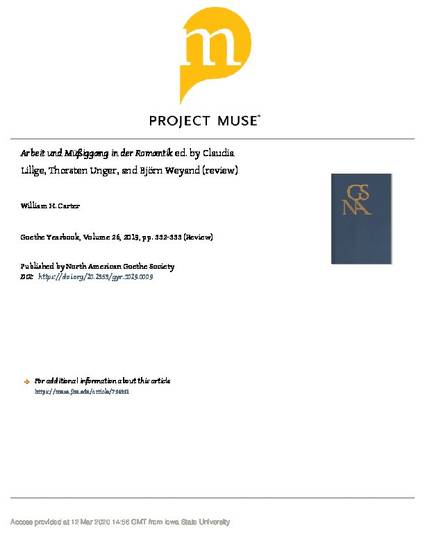
Work has long served as the object of literary, philosophical, and artistic reflection. Its alternatives are also well represented, particularly in German Romanticism. Caspar David Friedrich’s Der Wanderer über dem Nebelmeer (1818) offers a celebrated example of the latter, and features prominently on the cover of Arbeit und Müßiggang in der Romantik. Above the fog and in view of the wanderer, we also see Barge Haulers on the Volga (1870–73) by the Russian realist Ilya Repin. Because explicit depictions of work are largely absent in German Romantic painting, this striking image of manual labor was selected to counter Friedrich’s iconic image (11–12). The workers, in tattered clothes and wearing blank expressions, contrast sharply with the well-dressed observer transposed to witness the men (and boy) yoked to a heavy vessel. Barge Haulers on the Volga clearly depicts work, but to what extent does Der Wanderer über dem Nebelmeer represent idleness, leisure, or perhaps another form of work? The twenty-eight essays in this volume demonstrate that the questions surrounding work and its other depend on circumstance and perspective.
Available at: http://works.bepress.com/william_carter/14/

This review is published as Carter, W., H. Claudia Lillge, Thorsten Unger, and Björn Weyand, eds. Arbeit und Müßiggang in der Romantik. Paderborn: Fink, 2017.; Goethe Yearbook; 26(2019); 332-333. Doi: 10.1353/gyr.2019.0009. Posted with permission.